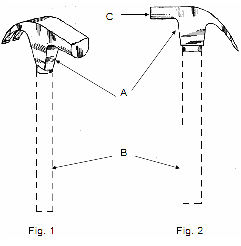DIY design registration
Drafting and filing your own design
You can protect the appearance (i.e. pattern, shape, configuration and/or ornamentation) of your article by filing your own design online via GlobalIPCo at a cost of $299.
To prepare a design you need to: determine the class in which your article falls; decide whether the application is for an aesthetic or functional design; prepare a set of drawings / photographs; and complete the prescribed forms.
Aesthetic designs protect those features that appeal to and are judged solely by the eye (e.g. jewellery), whereas functional designs protect those features that are necessitated by the function the article is to perform (e.g. a flat-top screw). But, do not file functional designs for spare parts, being articles that are expected to be replaced during the life of a “parent part” as a result of ordinary wear and tear.
A set of articles can be protected in a single application, provided that each article in the set has the same general character and are ordinarily on sale together or intended to be used together (e.g. cutlery, set of tools, tea set, etc). The registration protects the set as well as each individual article forming part of the set.
The scope of protection of your design is defined by the definitive statement. The (optional) explanatory statement focuses on specific aspects of the design and may be used to explain the function and the method or principle of construction of the article. These statements may include reference numerals to identify particular features of the article represented in the drawings / photographs.
Immaterial features of the design may be “disclaimed” by illustrating these features in broken lines. However, this may only be done where the features disclaimed are capable of being manufactured separately. For example, where a metal hammer head can be attached to wooden handles of various shapes, the handle can be drawn in broken lines.
To prepare the application:
- Register an account with GlobalIPCo.
- Complete the online application form.
- Sign and upload forms generated by GlobalIPCo.
- Take and upload photos of your product.
- Pay $299 by credit card.
Design applications may be submitted up to 6 months following public disclosure, provided a “release date” is claimed.
On registration, a brief statement of features that describes the design (±100 words) and the preferred drawing / photograph (typically a perspective view) will be published in the Patent Journal ($70). Following publication, your aesthetic and functional designs will prevent others within South Africa from making, importing, using, selling and advertising articles within the same class that embody your design or a design not substantially different, for periods of 15 and 10 years, respectively.
Design drafting guide
AESTHETIC OR FUNCTIONAL DESIGN?
Aesthetic designs: protect those features of an article that appeal to and are judged solely by the eye (e.g. jewellery)
Functional designs: protect those features that are necessitated by the function the product is to perform (e.g. a flat-top screw)
Notes:
- Spare parts are excluded from functional designs.
- Separate aesthetic and functional designs may be filed for the same article.
- A design application may be filed within 6 months following disclosure to the public.
- Term of protection: 15yr (Aesth.); 10yr (func.)
CLASSIFICATION
Ensure that you classify the design correctly. Refer only to the main class, e.g. class 9 for containers.
Where more than one class is relevant, file separate applications for each class.
DEFINITIVE STATEMENT
This statement defines the scope of protection afforded by the design. Example:
Protection is claimed for the features of shape, pattern, configuration and/or ornamentation [delete whichever is not applicable] of a [identify the article], substantially as shown in the accompanying representations.
Note:
When filing an application for a set of articles, the definitive statement must be amended as follows:
Protection is claimed for the features of shape, pattern, configuration and/or ornamentation of a set of ………, substantially as shown in the accompanying representations.
EXPLANATORY STATEMENT
This statement is optional. It is used to focus the eye on specific aspects of the design, and may be used to explain the function and the method or principle of construction of the article.
In practice, one identifies features on the drawings with arrows associated with letters/numbers, which features are referred to and discussed in the explanatory statement. One should include explanatory statements where the design is generally similar to prior art with the exception of subtle, but important differences.
BRIEF STATEMENT OF FEATURES
This statement has no legal significance. It is merely used for publication purposes. Example:
The design relates to a [identify the article]. The features of the design are those of pattern, shape, configuration and/or ornamentation [delete whichever is not applicable].
REPRESENTATIONS
Prepare drawings or photographs (on A4 paper) showing all necessary views. The bottom of each page must be signed.
Immaterial features of the design may be “disclaimed” by illustrating these features in broken lines. However, this may only be done where the features disclaimed are capable of being manufactured separately.
Select a perspective view for publication.
PRACTICAL EXAMPLE – A HAMMER

Article: Hammer
Aesthetic or Functional: Aesthetic
(Note: Although this is a functional object, the “new features” for which protection is claimed are not dictated by its function, they have that shape due to their eye-appeal. However, if the hammer is designed to stand on its head, the flat top may be dictated by its function and a functional design should also be filed)
Class: 8
Definitive statement: Protection is claimed for the features of shape and/or configuration of a hammer, substantially as shown in the accompanying representations, irrespective of the shape of the handle “B”.
Explanatory statement: The head “A” of the hammer comprises a striking portion “C” of substantially constant cross-section and a flat top.
Description of features: The design relates to a hammer. The features of the design are those of shape and/or configuration.
